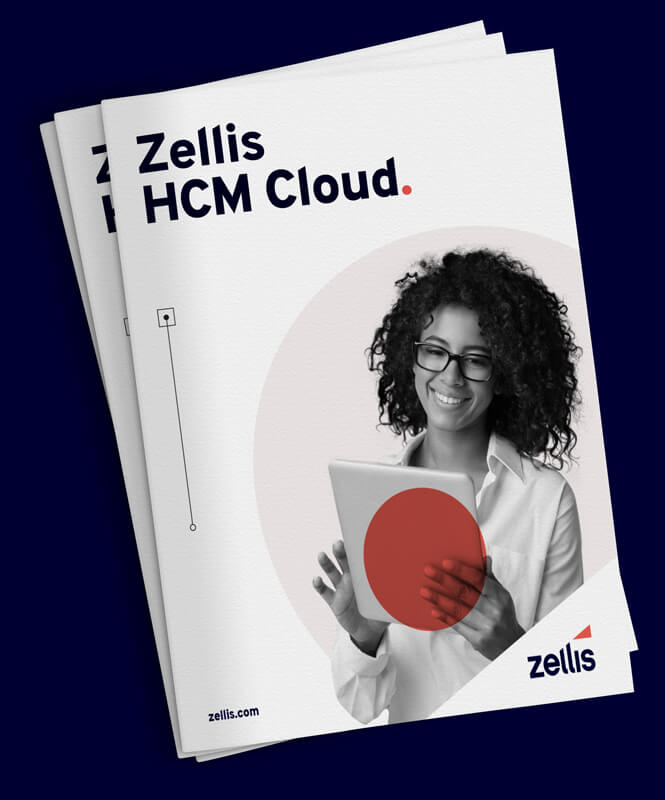It’s fair to say that 2020 was a whirlwind of a year. With a global pandemic shaking-up life as we knew it, the whole world had to rapidly adapt to new ways of socialising, working, and educating.
The COVID-19 crisis undoubtedly brought with it a multitude of payroll challenges. Whether that be from staff shortages, remote working and uncertainty for employees, or new and complex regulations set out by the government, it’s clear that these challenges will have a huge impact on payroll going forward.
And now we’ve finally left 2020 behind, we can look toward a more positive 2021 with much improved processes, superior payroll software, and a better understanding of the strategic importance of the payroll function.
Here are our four key payroll trends to look out for this year.
1. Creating an agile payroll process
A big focus throughout this year and beyond will be on making the payroll process much more agile. Faster and easier payroll processes can be achieved by harnessing and utilising two major innovations – Faster Payments and automation.
Faster Payments enables money to be transferred from one UK bank account to another in real-time. These same day payments are a significant improvement to the usual Bacs transmission, which tends to take three days to process into bank accounts.
Not only does Faster Payments mean payroll teams gain those three days back to complete extra checks to root out potential payroll errors, it also means they have much more time to input temporary data before having to sign off the final pay run. This is especially beneficial for administrators of weekly payrolls who currently complete all input within only a couple of days due to the three-day Bacs transmission process.
Increased automation can also bring many benefits to organisations, especially to those still reliant on manual or paper-based payroll processes. Whether it’s error alerts that reduce the risk of costly overpayments, automatic re-calculation of sickness entitlements, or automatic bulk uploads of annual bonuses, automation not only saves time, but also significantly improves accuracy and compliance by reducing payroll errors.
2. Increased investment in technology
In light of COVID-19, decision-makers across many enterprises are beginning to understand just how important the payroll function truly is. After such a difficult year for many, this year will most likely see businesses invest much more in improved technology in order to future-proof their payroll operation and ensure it’s prepared for anything else they may be faced with.
Using sophisticated software can reduce manual activity, alleviating pressure on small and thinly stretched payroll teams so they can meet deadlines, help preserve the accuracy of the payroll with built-in compliance tools and checks, and help standardise processes and become more efficient overall.
What’s more, now that working from home has become the normality for many people, businesses are shifting toward cloud payroll as opposed to on-premise, along with solutions that enable their employees to maintain a healthy work-life balance.
Providing consistent, high-quality payroll outputs no matter the hurdles faced, whilst supporting employees during the ‘new-normal’, will be major focus areas for businesses going forward. Investing in sophisticated payroll technology will enable organisations to achieve both.
3. An influx of new legislation and HMRC changes
Due to the unexpected pandemic outbreak, some of the legislation updates that HMRC had in the pipeline for 2020 were postponed. As life begins to settle down again and people become accustomed to new ways of working, we’ll likely be faced with an influx of changes that HMRC have been sitting on during the previous unprecedented year. Here are the updates we know so far:
IR35
IR35, also known as off-payroll working, was due to come into effect for the private sector in April 2020, but was postponed by a year. It will now come into effect in April 2021.
Coronavirus Job Retention Scheme
The Coronavirus Job Retention Scheme (CJRS) will now end on 30th April 2021, with the government continuing to fund 80% of furloughed employee’s wages capped at £2,500 per month. The extension of the scheme also brings the withdrawal of guidance for both the Job Retention Bonus and the Job Support Scheme.
National Living Wage
The National Living Wage will increase by 2.2% to £8.91 per hour from April 2021, and the minimum age for eligibility will be reduced from 25 to 23.
Redundancy protection
The redundancy protection period for employees on maternity leave and for other new parents is due to be extended. Although we’ve not yet got a date for these measures to come into place, we know that the protection period will apply from the point the employee informs their employer that they’re pregnant, and continue for six months after they return to work.
Gender pay gap reporting
In 2020, the government suspended the enforcement of Gender Pay Gap reporting for the 2019/20 tax year. Reporting has now become a requirement once again, and by 5th April 2021 employers must report their 2020/21 Gender Pay Gap information using data from 5th April 2020.
Additional HMRC changes
We may also see an increase in additional, non-legislative changes over the next year. For example, HMRC now have a high standard for use of technology, with a strong focus on digitalisation. Therefore, they have stopped providing paper-based stationery such as P60s and P45s, and employers must now provide these documents online, or print them directly onto plain paper.
4. Recognising the strategic value in payroll
Another trend to look out for in 2021 is the major shift in the payroll industry and the much-improved understanding of the importance of payroll. Many businesses will now see the strategic value that payroll holds, whereas this wasn’t easily recognised before the pandemic hit.
Payroll professionals were classed as key workers almost overnight, and it was in that moment that knowledge gaps within payroll teams came to light. Plus, organisations with small teams, or employees working across multiple roles – such as HR admins who also deal with the payroll process – were impacted the most by this sudden change.
As a result, many employers may increase the amount of payroll training and qualifications they provide to their teams, in addition to upskilling further employees, and supplying mandatory compliance training to help improve business continuity in the future.
On the other hand, we’re also likely to see many organisations look to external payroll providers for either permanent support through a Managed Payroll Service, or to take up emergency payroll support as a backup when required to complete certain payroll tasks.
What to expect in 2021
Although 2020 is now behind us, it’s clear that the impact of COVID-19 will continue to influence payroll trends throughout 2021 and even beyond. It’s taken a global pandemic for payroll to gain the attention and understanding that it truly deserves, and this shift in attitude will mean an increase in support through either improved payroll technology, employee learning and development, or partnering with a Managed Payroll Service provider.
To find out how Zellis can help support your payroll operation throughout 2021 and beyond, get in touch today.















